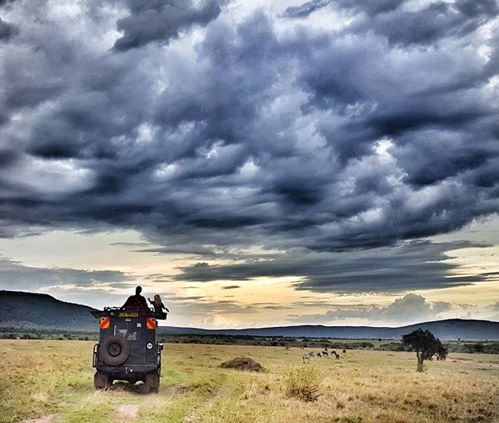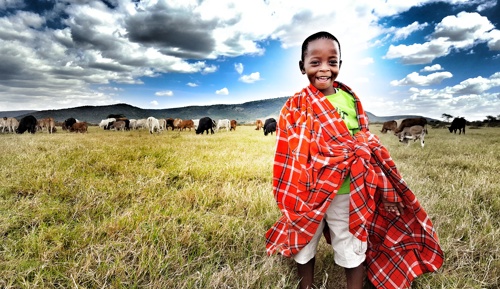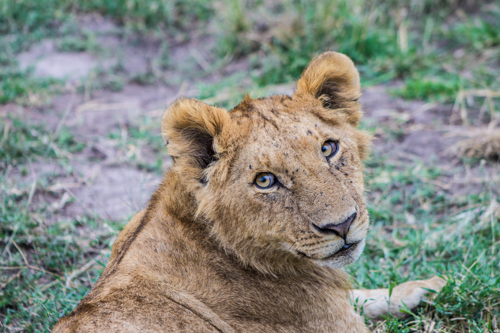When Conservation Pays: How Lease Payments Are Reshaping Futures in Northern Mara
Published July, 14 2025
The sweeping grasslands of the Maasai Mara are world-famous for their wildlife, from thundering wildebeest herds to prowling lions. But for the Maasai communities who call this landscape home, that fame hasn’t always translated into fairness. For decades, conservation efforts focused on animals and tourists, leaving the landowners with little say and even less benefit.
Today, that’s changing.
A new model of conservation is quietly taking root in the Northern Mara. It’s called lease-based conservation, and it may just hold the key to more equitable, inclusive, and sustainable futures for both people and wildlife.
That’s why the Platcorp Foundation commissioned a landmark study in 2024 to better understand how lease payments were transforming lives, livelihoods, and landscapes across the Northern Mara. The findings, drawn from interviews with landowners, board members, women and youth, offer a powerful glimpse into how conservation can work for people, not just wildlife.
Conservation That Pays

At the heart of this model are lease payments. Instead of selling their land or turning it into farmland, Maasai landowners lease it to conservancies. In return, they receive predictable income, usually paid monthly or at the start of school terms. These payments are transforming households across conservancies like Enonkishu, Ol Chorro Oirouwa, and Mbokishi.
“Before lease payments, food was scarce,” shared one woman in Mbokishi. “Now…we eat three times a day.”
Others spoke of education. “It takes the stress of school fees away,” said a landowner from Enonkishu. Families no longer have to sell livestock or land to send their children to school. The result? Higher enrolment and greater peace of mind. As one mother put it, "I used to think conservation meant fences. Now I know it means my children stay in school.”
Land Security, Livelihoods, and Less Poverty
In a region where land is both livelihood and heritage, the lease model is also keeping land in families. “Men used to sell land bit by bit,” explained a key informant. “That led to conflict. Now…there’s no need to sell.”
This shift is social as well as financial. Several participants linked the decline in poverty to less domestic violence. As one conservancy board member put it: “It’s more peaceful now. Men can provide, and that reduces fights.”
Livestock, a central pillar of Maasai life, has also benefited. With structured grazing and improved pasture management, communities no longer migrate with cattle during droughts. “We used to walk cows all the way to Tanzania,” said one woman. “Now, there’s grass even during the dry season.”
The Elephant in the Room: Inclusion

Yet, for all the promise of lease payments, not everyone benefits equally.
Most land titles are held by men, so lease payments go directly to them, even when women do the bulk of household labour and manage livestock. They are largely excluded from decision-making. “We benefit indirectly—like the kids going to school—but we don’t get the money.” said one woman in Mbokishi.
In some homes, women can’t even ask about lease income without risking conflict. And while a few women now sit on conservancy boards, they’re often outnumbered or ignored. “There are women on the board,” one said, “but they are not heard.”
Still, change is stirring. Some female board members report growing respect and equal voting rights. Others are calling for support; not to split lease payments but to create alternative income streams like beekeeping, milk centres, and women’s savings groups.
Youth, too, are often excluded from decision-making, even when they contribute at home. “In Maasai culture, two men can’t make decisions in one house,” said a young landowner. As a result, ideas for bursaries, internships, or employment often go unheard.
One bright spot? A growing call for youth platforms. “We need forums where we can speak,” said one participant. “Where we can show we care about conservation—and our future.”
A Better Future for People and Nature
The conservancies in Northern Mara aren’t perfect, but they are proving that conservation and community well-being don’t have to be at odds.

In 2024, with support from the Platcorp Foundation, three conservancies—Enonkishu, Ol Chorro Oirouwa and Mbokishi joined forces to form a 30,000-acre conservation landscape. A joint management entity was launched, allowing conservancies to retain autonomy while benefiting from shared branding, central fundraising, and collective conservation planning. Over 200 landowners now participate in this shared governance, with more than 3,000 people across households directly benefiting from lease income.

With support from the TUNZA Fund, a blended finance initiative that backs conservancies with loans, microfinance, and technical help, communities are not just preserving wildlife. They’re keeping kids in school, improving diets, and planning for the future.
The Path Forward

Of course, challenges remain. Payments need to be timely and reliable. Women and youth need more inclusion, and livestock losses from predators still threaten the balance between people and wildlife.
But the foundation is strong. Lease payments are not handouts; they’re contracts rooted in dignity, stewardship, and mutual benefit. As one woman put it, “We don’t want charity. We just want our share—and a chance to build something of our own.”
In Northern Mara, that chance is finally arriving. Welcome to a new era of conservation. One where land doesn’t have to be sold to survive. One where wildlife and people coexist. And one where the future of the Mara is being shaped not by outsiders, but by the communities who’ve lived there for generations.